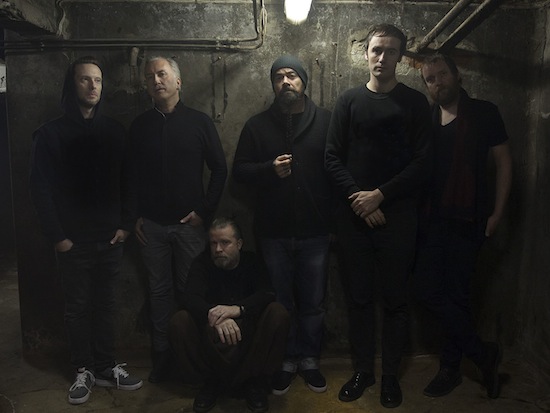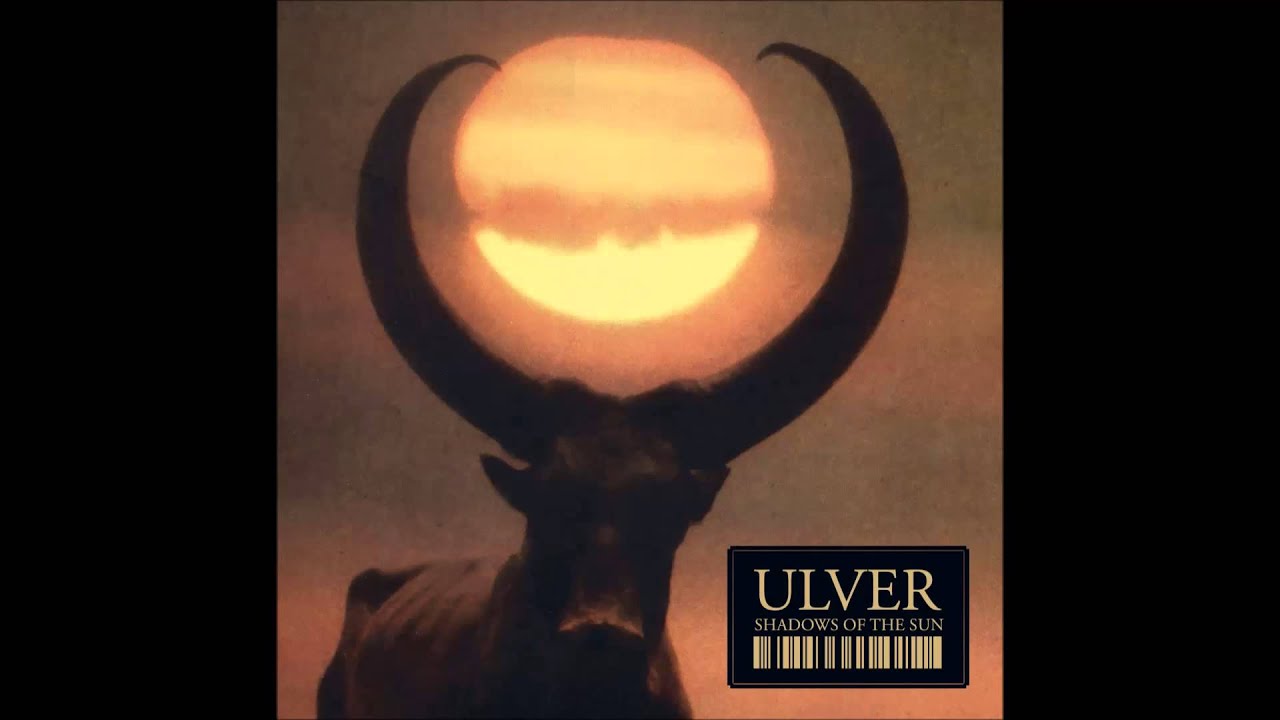Ulver portrait by Christian Tunge. All other photographs courtesy of Kristoffer Rygg unless otherwise stated
Kristoffer Rygg of Ulver has gone by many monikers in his time: ‘Garm’, ‘Trickster G’ even ‘Godhead’. The fluidity of the Norwegian polymath’s title is matched only by the ever evolving nature of the music he’s created over the past 25 years. Though he’s worked with such diverse boundary-pushing acts as Arcturus, Æthenor and Head Control System, the musical project that acts as his conduit to the wider world continues to be the genuinely indefinable Ulver. Having begun life in the ungentle cradle of Oslo’s infamous early 90s black metal, Ulver then proceeded to alight briefly on the diverse musical branches of pastoral folk, trip hop, Gregorian classical music and drone metal; each time staying only long enough to soak up the scenery before fluttering off to seek a new incarnation.
Though the group have picked up and shedded members like seasonal winter coats, Rygg has consistently remained in the creative cockpit. It was his decision to kill off the band’s black metal identity in order to incorporate greater swathes of electronics into their sound, it was his decision to write an album incorporating the lyrical entirety of William Blake’s The Marriage Of Heaven And Hell and it was his decision to form a full live version of Ulver in 2009 to perform live for the first time since their time of inception in 1993.
2016 see’s the restless innovator finally slowing down to take stock of the band’s legacy, ending an intense period of touring with a unique form of live album completely built around improvisation and expertly mixed together by band member Daniel O’Sullivan (also of Grumbling Fur and Æthenor) and a break in which to plan the next predictably unpredictable stage in the Ragnar Lothbrok–worthy saga of Ulver. There’s no better time, then, for black metal’s most prodigal of children to take us through ten essential milestones of his career.
The first trip to Helvete
I was just 15 when I first walked into Helvete. At this time in junior high we were all skater thrasher death metal kids. There was this older guy I looked up to who was a great guitarist and into extreme metal, although in hindsight it probably wasn’t extreme enough for me! He told me about this weird music shop that had just opened up in the old town and we should check it out, so we got on the tram the next day and walked in with our heads held high.
It was quite an eye-opening, or rather eye-closing, experience. I remember your eyes had to adjust to be able to actually see the different items in there. Everything was shrouded in black and exuded a very tomblike atmosphere which quickly turned into a morbid fascination for me. It took a year or so to slowly work my way in. I went there first to buy music, but then as time went on I could feel the initiation rites coming on. There were suggestions: "You should really take this demo home, its pure evil. Audial evil." This was pretty important and defining stuff to this wild bunch of kids round my age: this direct gathering point where young kids could spin off the ideas of these older guys. So Helvete was the nucleus I would say. And that’s kind of how Norwegian black metal was born I think, it couldn’t have been without the context of that shop.
You aspired, you had to put on your tough mask and display a bit of theatricality. When you’re young of course you really believe it, but in retrospect it was a show. Euronymous (Helvete owner and founding member of Mayhem) was 22, maybe 23, so he was an old guy. We kind of had to get creative to impress the big boys. But the exclusivity that existed in those early days also came from the simple fact that there weren’t too many people with those kinds of interests around. Every one of those guys eventually formed bands and took some part of the death metal stuff of the late 80s and mixed it with something new, something darker, more sinister. In our case it became the stuff we’d been reading about at school, the folklore and Norwegian mythology that we mixed with this more mid-paced eerie metal sound.
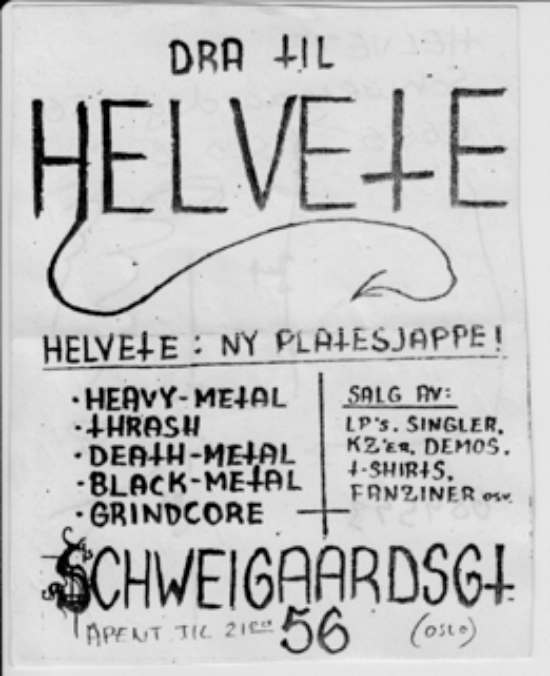
The first black metal gathering at Morbid Angel’s Oslo performance
This was a really important event. Everyone was there and it was here I met Jørn (H. Sværen), who wasn’t actually a formal member of Ulver until after the turn of the millennium, but he has been my closest friend and writing partner ’til this very day. In a way you could say Ulver was born then. I was doing a fanzine at the time (Chronicles Of Hate) and Jørn was also involved in one with Faust (of Emperor). It was called Orcustus and it was Jørn who coined the name and drew the logo. He had done that for a couple of the early death bands too, like Old Funeral and Amputation (pre-Immortal).
At that gig he was actually selling the fanzine of noise musician Lasse Marhaug, which was a silly thing called
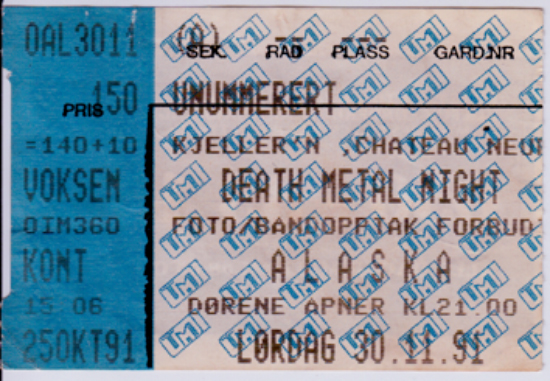
Meeting Carl-Michael Eide and forming Ulver in 1992
It was about half a year later when Ulver really started. Carl was a skilled player and I wasn’t, which is why I became the singer. I met him on my first day of class and he actually dropped out just a week or two later. But the metal thing had tied us together and it was only a few weeks later that there were some internal troubles in Satyricon (whom Carl was a member of at the time), so he just said, "Fuck it, let’s start a new band." And that’s how Ulver was formed.
I think Carl was more progressively inclined than the rest of Satyricon, and he was keen to do more complex musical stuff and employ some creative drumming. At the time most of the other black metal drummers were refusing to play drum breaks or fills, choosing instead to go ‘CHKCHKCHKCHKCHKCHKCHKCHK’ all the way and only use four bar blast beats to keep it minimal. A lot of guys, including Satyricon, were into that. Our mindset was probably a bit more progressive.
Seeing Diamanda Galás at the Ultima Festival in 1993
A lot of these dudes weren’t purely listening to metal all the time and Diamanda Galás was of course a star in the black metal scene. A dark muse. She was here in Norway doing her Plague Mass tour which was, to date, the most intense thing I have ever witnessed. It was at the modern music festival Ultima, and I think all these contemporary types attending were a bit puzzled by the huge turnout of the black leather-clad legions.
There was a point in the concert where she was playing the song ‘Let My People Go’, singing "Oh Lord Jesus, do you think I served my time? The Devil has designed my death and is waiting to be sure," and, sure enough, there was a guy who had a cardiac arrest. It was like a fucking weird séance: her standing there topless and smeared in blood while a load of ambulance personnel came in and dragged him out. It was a very black metal moment without it being, you know, black metal. Actually, at the same festival that year was the only time Lars Pedersen (When) performed The Black Death live in its entirety and with a string quartet.
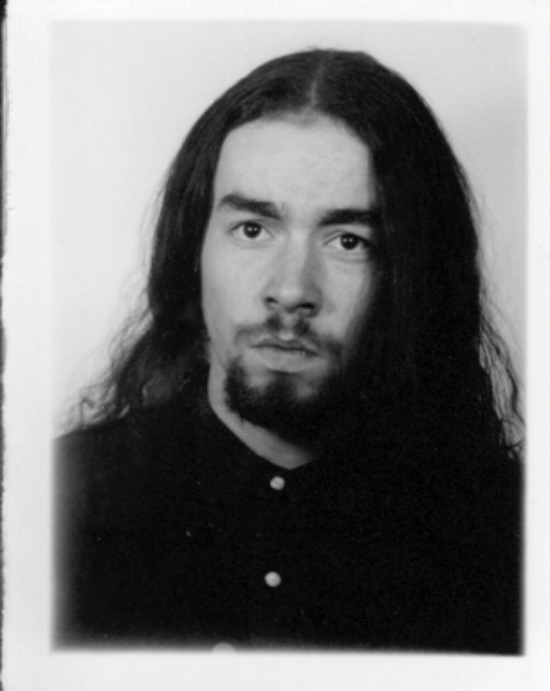
Listening to Coil while on a boat trip with other band Arcturus
Coil were a massively important influence on us too, a game changer for me really. Jørn was one of the people to first introduce them to me. He was listening a lot to stuff like Nick Cave, Neubauten and The Residents and such, and one day he gave me this tape, which I still have. On one side it had the soundtrack to the film Suspiria by Goblin and on the other it had a taped radio show from a student channel here called Sort Kanal, which is, in English, ‘Black Channel’ of course. They had this hour introduction into the strange and frightening world of Coil, kind of like this article.
I bought Scatology and Horse Rotorvator right after, but Love’s Secret Domain was the one that totally blew my mind. Especially because of the circumstances, I mean we were just high all the time! We would smoke while out floating aimlessly on the waves of the fjords, get really stoned and trip out to Coil while also indulging in a bit of mushroom action after anchoring for the night. I remember Hugh (bassist in both Ulver and Arcturus at the time) hot-wired a fucking tractor one night and drove it down to the beach and ploughed into the water, got out and screamed out to the sea, or the skies, I don’t know: "I’m a fucking human being!" Anyway, that experience with Coil and general mind-fuck of that summer pretty much changed what I wanted to do with music.
Making Themes From William Blake’s ‘The Marriage of Heaven And Hell’
It seemed quite a natural direction to me at the time. This was when I was also working as an apprentice in a mastering studio in Oslo (Strype Audio), so I had started mucking about with found sounds, putting them into the SADiE program and processing and looping things and such. It was then I met Tore (Ylwizaker) who came from a more post punk background and was a total pro on tape loops and early Akai samplers and stuff like that. He was the ‘beats master’ in a band called Jungle Medics and was also well into his industrial collages as ‘Agent A02’ of the music collective Origami. He had all these cassettes by Autopsia and Sigillum S and such underground acts. We really hit it off and that’s when the Blake project was born.
Despite the perceived change of direction on that album there was a lot of continuity. We still had the metal thing in our bones, so to speak, and the band line-up from our metal albums were all present throughout. But towards the end of making that record it had also become quite clear that the band was turning into something else, and I guess a lot of them didn’t quite know how to contribute that much in the end. It was also the regular story of a few of them having kids and having to go look for proper jobs while Ulver continued head on.
At this point we hung out quite a lot with the Turbonegro guys, who were recording Apocalypse Dudes next door. These were the days when their guitarist Euroboy was in another band called Kåre and The Cavemen. We jokingly called them the ‘Noel and Liam’ of the Oslo scene. They never really made much of an impact outside Norway but they were big rock stars here. Anders Møller from that band is a very important part of our new album actually. Even though we were operating with very different aesthetics and such we’ve been good friends with those guys since. I even released Kåre’s solo albums on my label (Jester) after Kåre and The Cavemen broke up.
Making Blood Inside and the Uno soundtrack in Los Angeles
We spent a lot of time on that record (Blood Inside), as I think you can probably hear. That’s probably why it still holds up today: it’s a fucking many-headed Hydra! It’s the album that Dan (O’Sullivan) really loved actually. He reached out after hearing it and that’s when I got to know him. He invited me into Æthenor not too long after as a result of that record. And of course I knew Stephen (O’Malley) from before as well, him being an overseas chronicler of the black metal scene in Norway back in the days.
King Crimson’s producer Ronan-Chris Murphy had also reached out and was keen to work with us, so we figured why not do that whole Los Angeles thing? Partly the old skater kid in me just really wanted to go to Venice Beach! At the same time my childhood friend Aksel (Hennie, who recently starred in Ridley Scott’s The Martian) who was getting quite big in movies and really dug our album Perdition City, wanted to involve us and Tom McRae – they had met on a TV talk show – in his directorial debut, so Aksel flew over to join me. Tom and his band were already in California writing an album so that was a pretty incongruous moment; I’d never have imagined when we were younger that we’d end up sitting in a LA studio jamming together with English singer-songwriters to create soundscapes for a film.
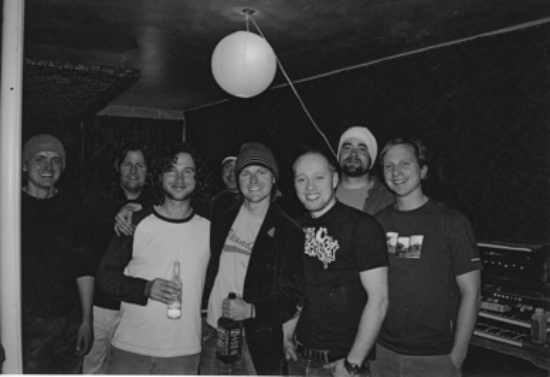
Making Shadows of the Sun and the New York release party
This was a pretty hermetic process and was mainly done by Tore (Ylwizaker, who spent a year studying classical music prior to recording the album) and myself. I’d moved out of Oslo by then and had two small kids and there were more diapers than there was rock & roll going on in my life. Outside of this domestication it was all about work, which made it a very focused and kind of reflective on life and legacy type of album.
But we did go to New York for a release party of sorts. Now obviously we didn’t really play live at this point so we had a couple of other bands playing for us instead. It was kinda weird, but good times. We were meant to play a DJ set, but I don’t think it ever happened. We were too damn preoccupied chatting to all the people who came out, signing stuff and such. Our decision to start playing live again was partly born out of the awkwardness of that situation, or at least it got us talking about it again.
While in New York there was also another incongruous incident when I briefly hung out with the rapper The Game. We were living in this posh hotel on Times Square and I was standing in the elevator when all of a sudden this whole entourage of rather buff black men squeezed in. I looked up at this one guy’s face and saw that LA tattoo and just burst out with "Whoa, The Game!" and he was like "Yeah man! What’s up?" He hadn’t heard of me of course but seemed intrigued by the few things I told him about Ulver and Norway and why we were there, so we just went in the lobby after and talked for a bit. He told me he was there for a trial related to a shooting incident at a basketball game in LA or something, which was fucking strange. When it was over he said "Well, have fun," strode into this big black car with his entourage and left. For some strange reason we seem to run into rap people when in New York; a few years earlier, on our way back from the session in LA, me and Tore ended up hanging out a couple nights and days with Sensational, which was pretty crazy.
Playing live for the first time in 15 years
Soon after we’d finished Shadows of the Sun the author Stig Sæterbakken (RIP), who was the creative director of the Lillehammer Festival of Literature at the time, invited us to play. They have a big concert every year in the auditorium at Maihaugen. We said no the first year – he then booked Antony and the Johnsons instead – then no again the second year. By the third year he was so adamant about it that we decided to drive up to his house for a coffee and conversation. He persuaded us there and then to do it. Those literature peeps had some resources that allowed us to set off the time and gather the people and things we needed to make it all come alive.
To be honest it was terrifying, we had all these people traveling from all these countries to form this curious conglomeration in Lillehammer, which is kind of in the middle of nowhere, and there were some pretty high expectations. We weren’t very routine, obviously, but I think we pulled it off well. In fact I’d say it went very well, we had some experienced people with us by then, like Dan, which is like having three musicians in one guy, and Lars Pedersen, who’s an amazing drummer. Pamelia Kurstin was also there with us.
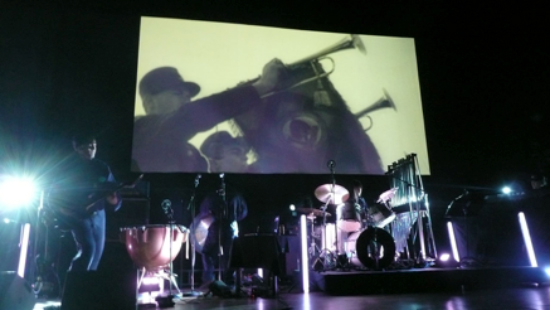
Photograph courtesy of Jester Records
2010 European tour and Opera performance
After spending two solid months putting together the visual aspect of the show and rehearsing the songs for Lillehammer it was definitely on the cards that we’d play live again, so we did five or six more shows that year and then plotted the European tour for 2010. This culminated with our night at the Oslo National Opera, which was like Lillehammer part two but even bigger and also in our hometown. That was also terrifying, having your parents there in suits and ties at this high-brow event. But we were a bit more secure by then, fortunately. We keep doing this shit to ourselves you know. We sort of insist on the grandiose, even if it occasionally bites us in the ass. It’s in our DNA, we can’t help ourselves.
Performing with (the recently deceased) Ian Johnstone was a great pleasure too. We were a bit in awe when he came in and probably acted like total fanboys. But he was just a guy you know? A really nice down-to-earth fellow who was interested in a lot of the same things as us. And his performance was so touching and impressive but it also took a lot out of him, physically and mentally. So after it was over we had decided we would spend four or five days up in my family’s place in Sogn og Fjordane, which has all this fantastic ‘postcard-Norway’ scenery. Ian had a farm in the north of Spain, but when we got over to the lakes and the fjords he’d stand there in the mountains and ask, "What are the real estate prices like around here do you think?” Like he’d seriously consider packing up and getting some new goats and sheep in this rural part of north-west Norway that he came to love. I only saw Ian one other time after that, in Italy a year before he passed. But that trip is a good thing to remember him by.
Ulver’s new album ATGCLVLSSCAP is out now on House Of Mythology

